Our last blog post chronicled the Atlantic Puffins that make Machias Seal Island their home for a few weeks every year to nest and produce the next generation of Puffins. That post also included Arctic Terns that successfully bred on the small island in the mouth of the Bay of Fundy for the first time in many years. If you missed reading the blog you can find it here.
Two other pelagic (ocean faring) species that also nest on Machias Seal Island are the Common Murre and the Razorbill. Both of whom happily share the same nesting areas along with the Atlantic Puffins and they all seem to get along rather famously. It was not uncommon to see all three birds occupying a perch on the same boulder.
The Common Murre is a member of the Auk family of birds and is larger than the Puffin, averaging about 18″ in length with a wingspan just over two feet. They are quick but not very agile in the air reaching speeds of up to 50 mph. Murres actually prefer diving to flying and they have been recorded at depths of almost 600 feet. They generally stay submerged for one minute but can double that if necessary. Murres are pursuit divers and cover approximately 100′ of range with every dive, using their wings to propel themselves as they chase their prey.
The Common Murre pictured below is referred to as a bridled Murre because of its white eye ring that forms a posteriorly trending eyeline. This unusual feature is found among Murres that breed in the Northern Atlantic regions.
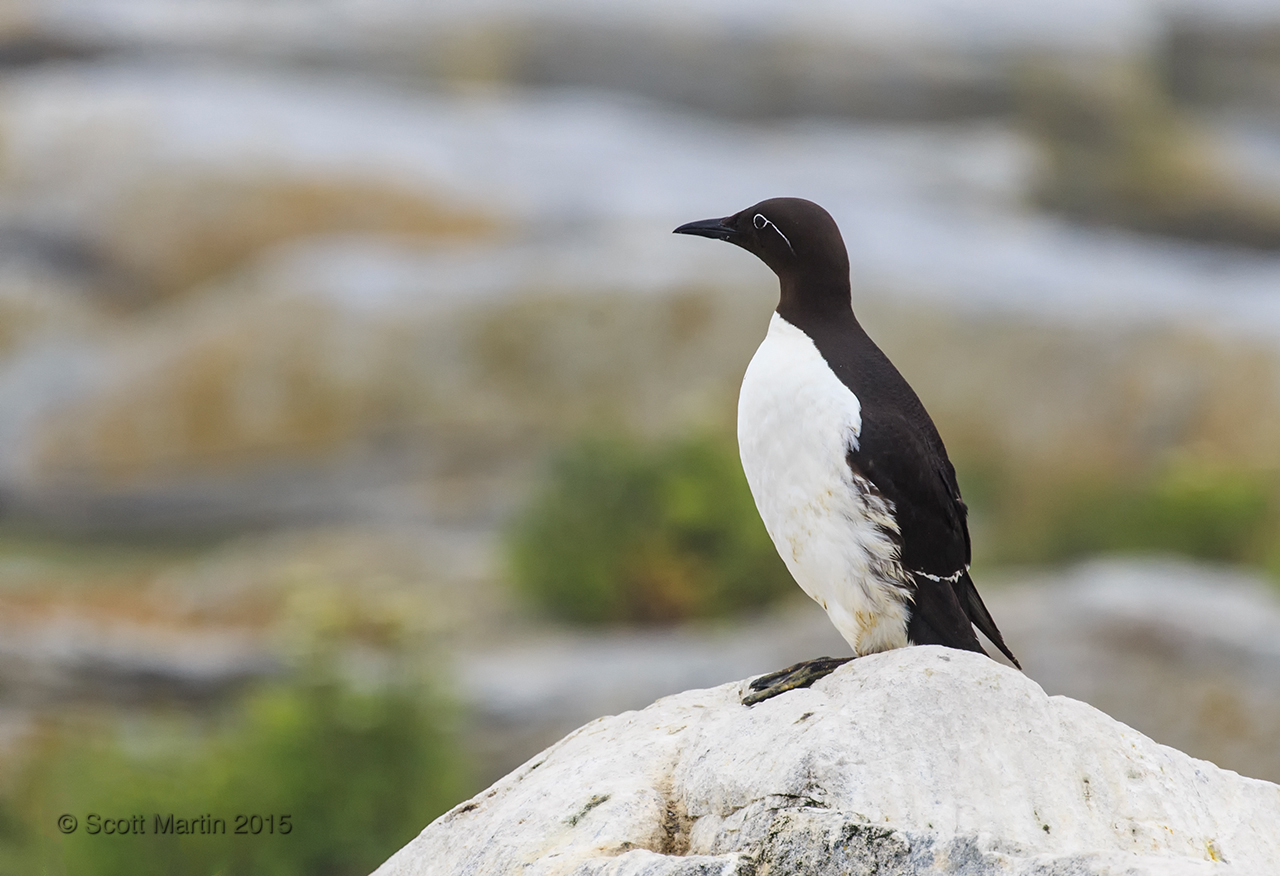
Not as agile in the air as the Puffin however they are quick and will travel long distances in search for food.
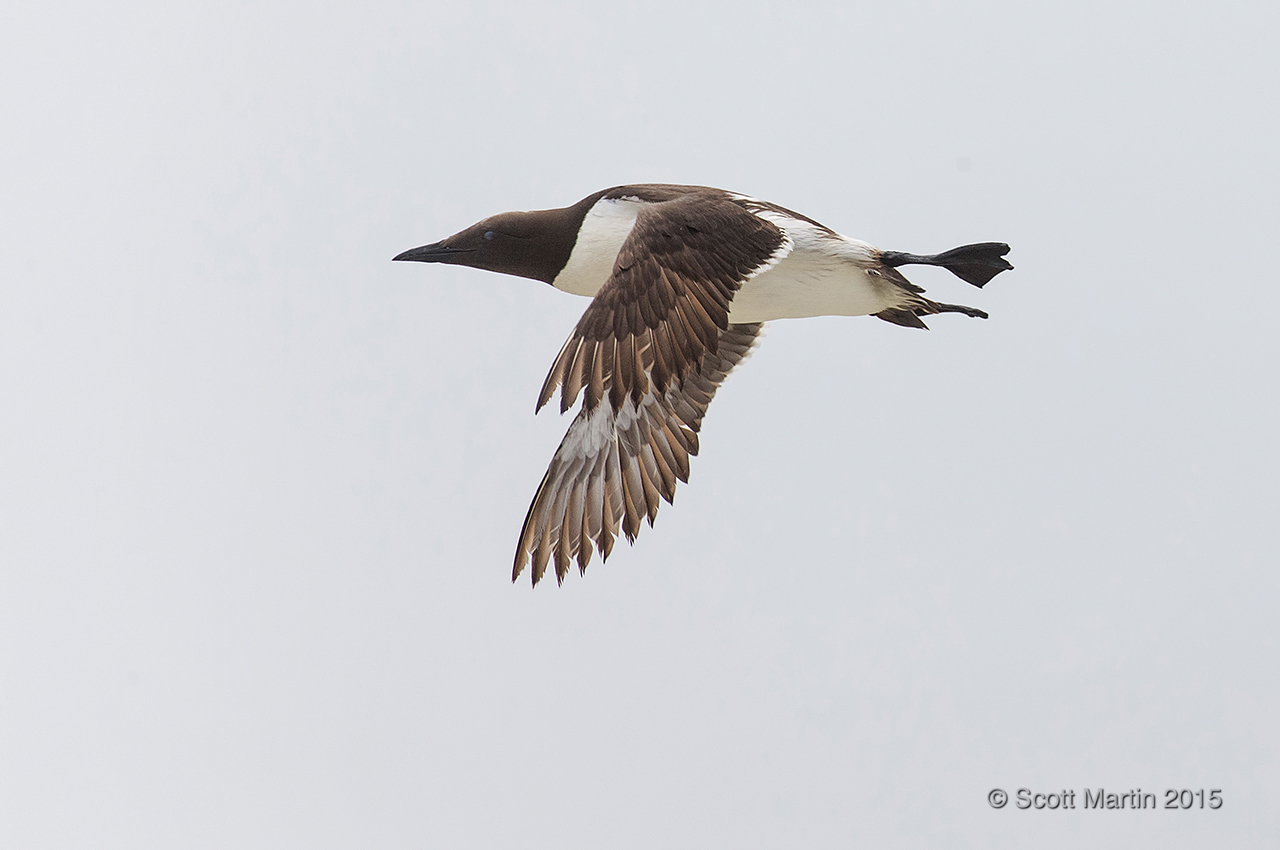
The Razorbill is another bird from the Auk family and is actually the closest living relative to the now extinct Great Auk. Razorbills are pelagic birds and like Puffins and Common Murres, are monogamous colonial breeders that only come to land once each year to lay one egg that is equally incubated by both parents for approximately one month. Razorbills are about the same size as Common Murres and larger than the Atlantic Puffin as can be seen in the image below.
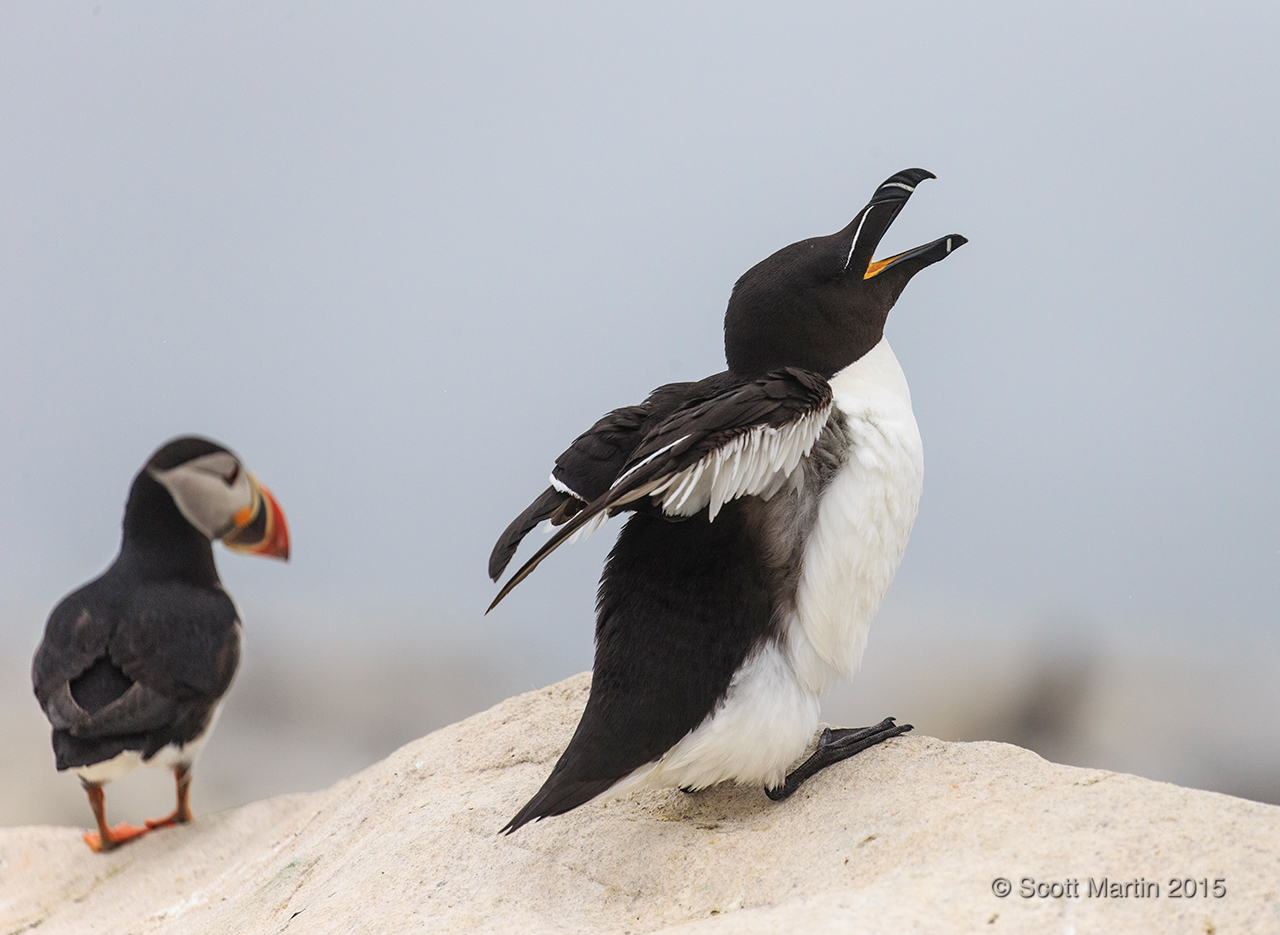
Razorbills have thick blunt bills that set them apart from Common Murres who otherwise appear quite similar although the Razorbill’s head is a darker shade of black. With black eyes and the absence of an eye ring, it was extremely difficult to visualize the eyes of the Razorbill when photographing them. This next image is my favourite as the bird landed on a boulder that allowed a nice low angle from the blind we were in while on Machias Seal Island.
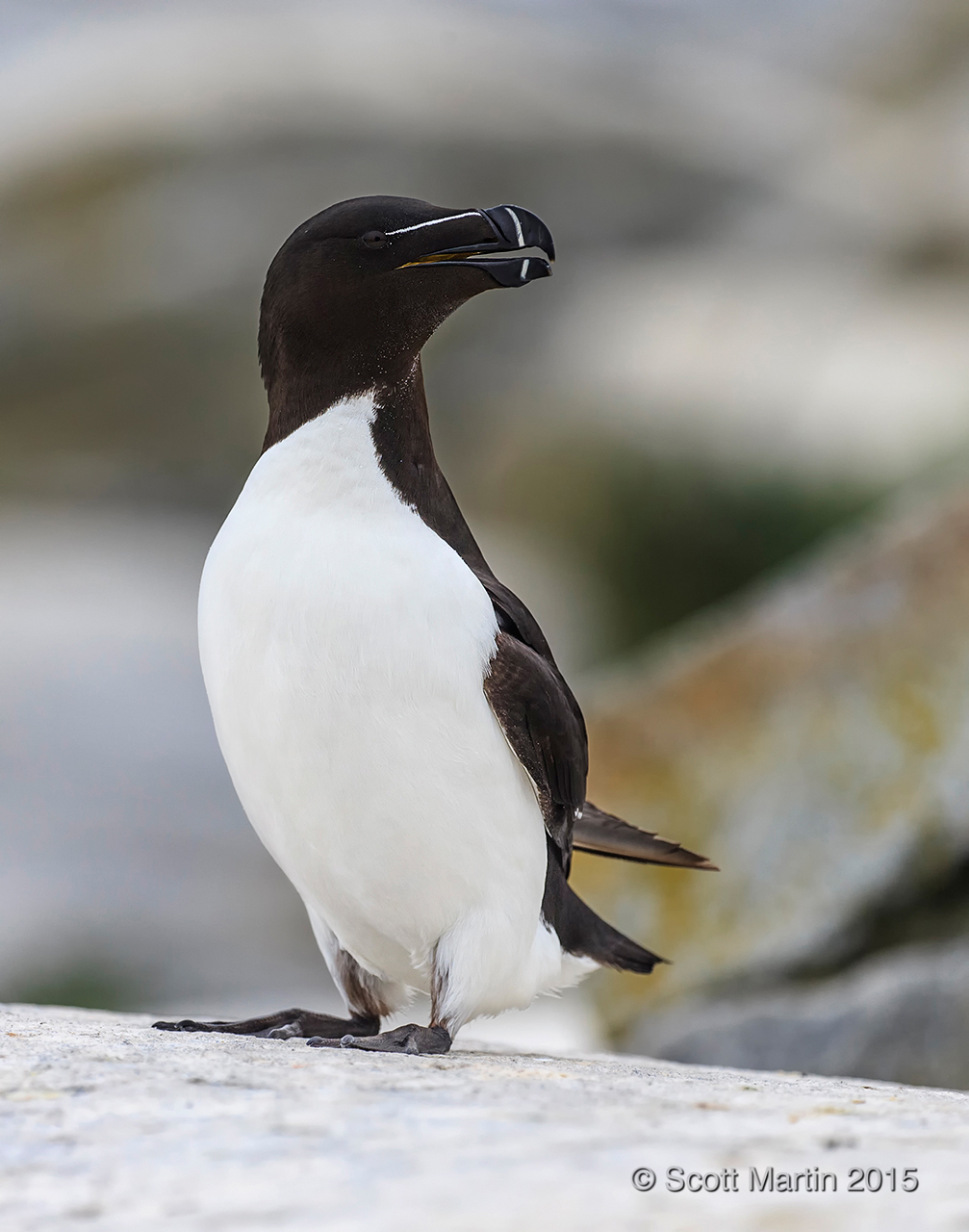
Razorbill numbers are trending lower over recent years and they are now listed as ‘Near Threatened’.
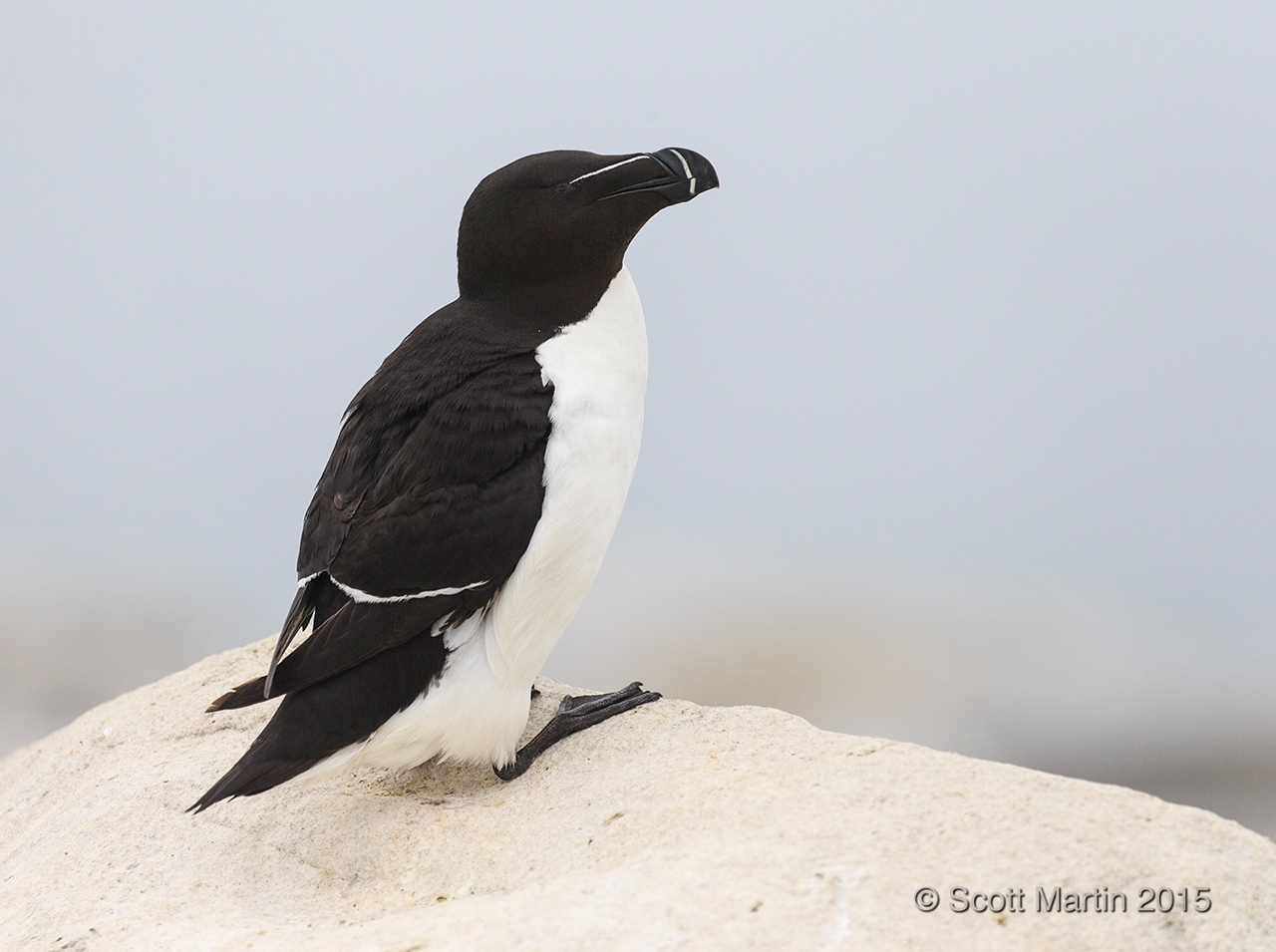
A Razorbill showing off and demonstrating its larger size compared to the Puffin in the foreground.
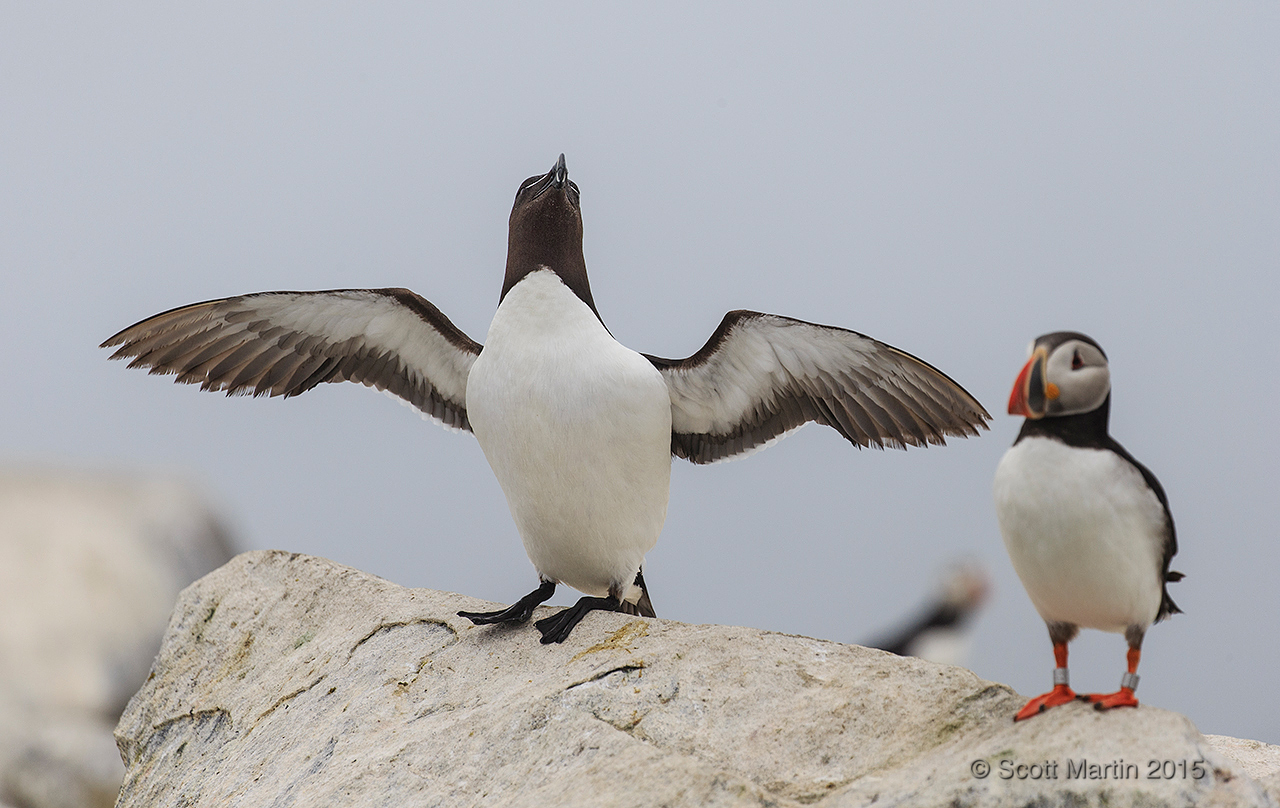
The average lifespan of the Razorbill is 13 years however one banded bird in the United Kingdom has lived for more than 41 years which is an amazing record. I like this environmental in flight shot of the Razorbill with the classic rocky shoreline the Razorbills colonize every year during breeding season in the background.
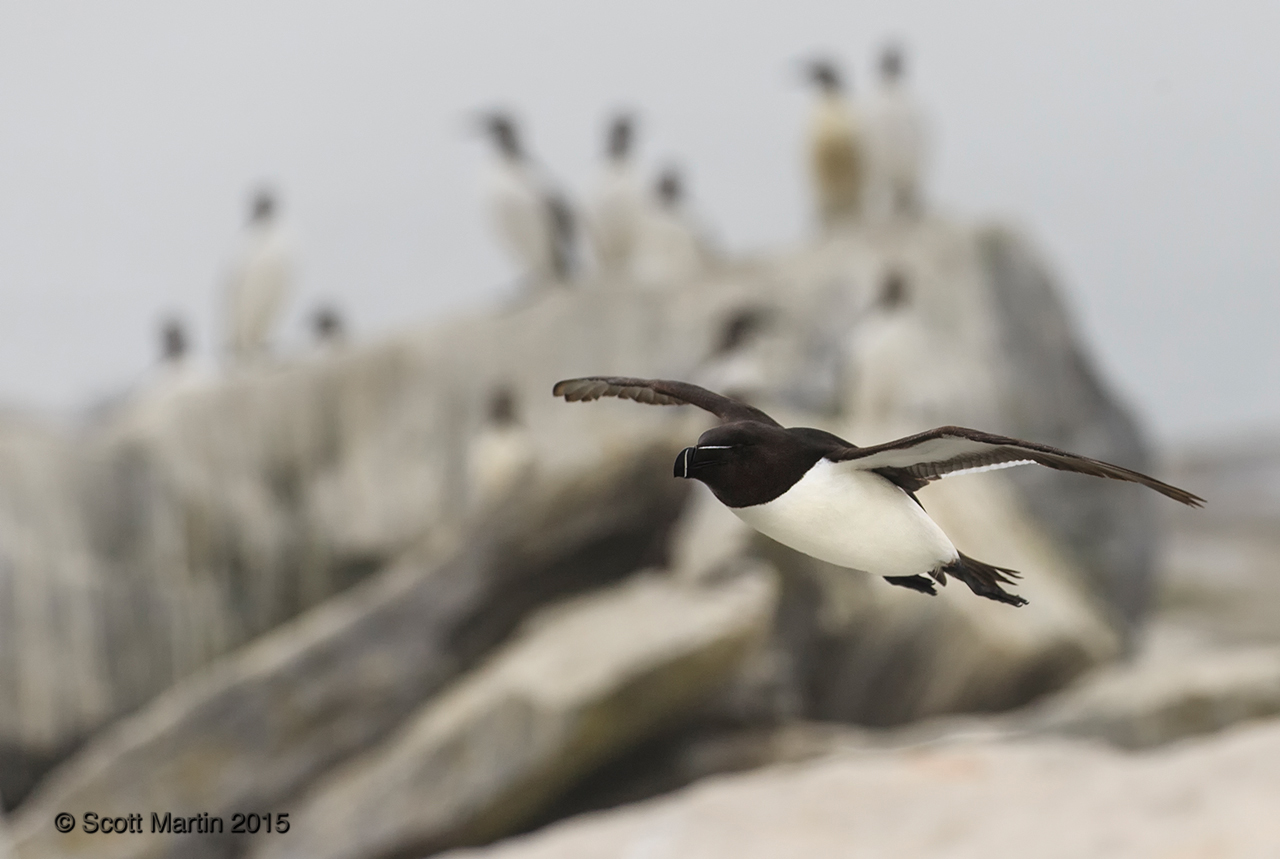
It may be just me but the Razorbill seems to enjoy wings that are proportionately longer than the Common Murre and Atlantic Puffin giving a more graceful appearance in flight.
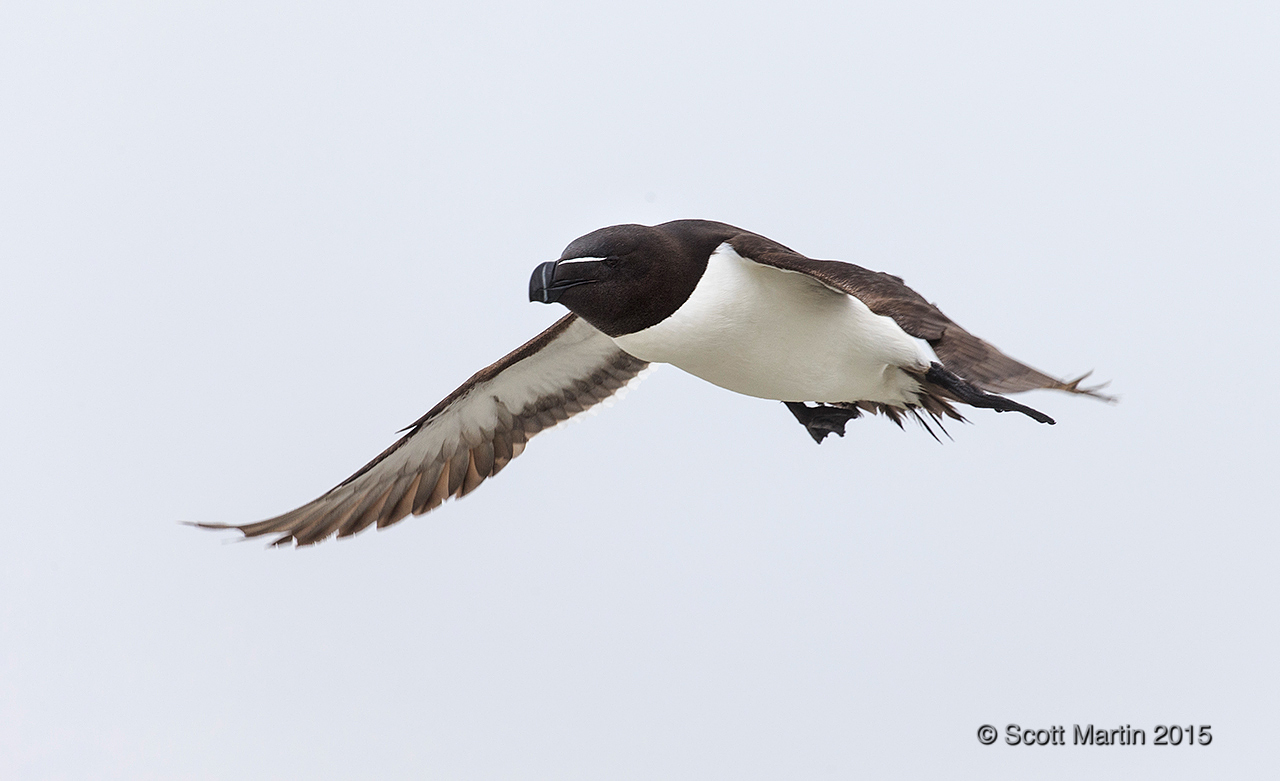
Razorbills have the longest tail feathers of the Auks which extend past the feet in flight. You can see this clearly when comparing the image below with the Common Murre in flight image shown previously.
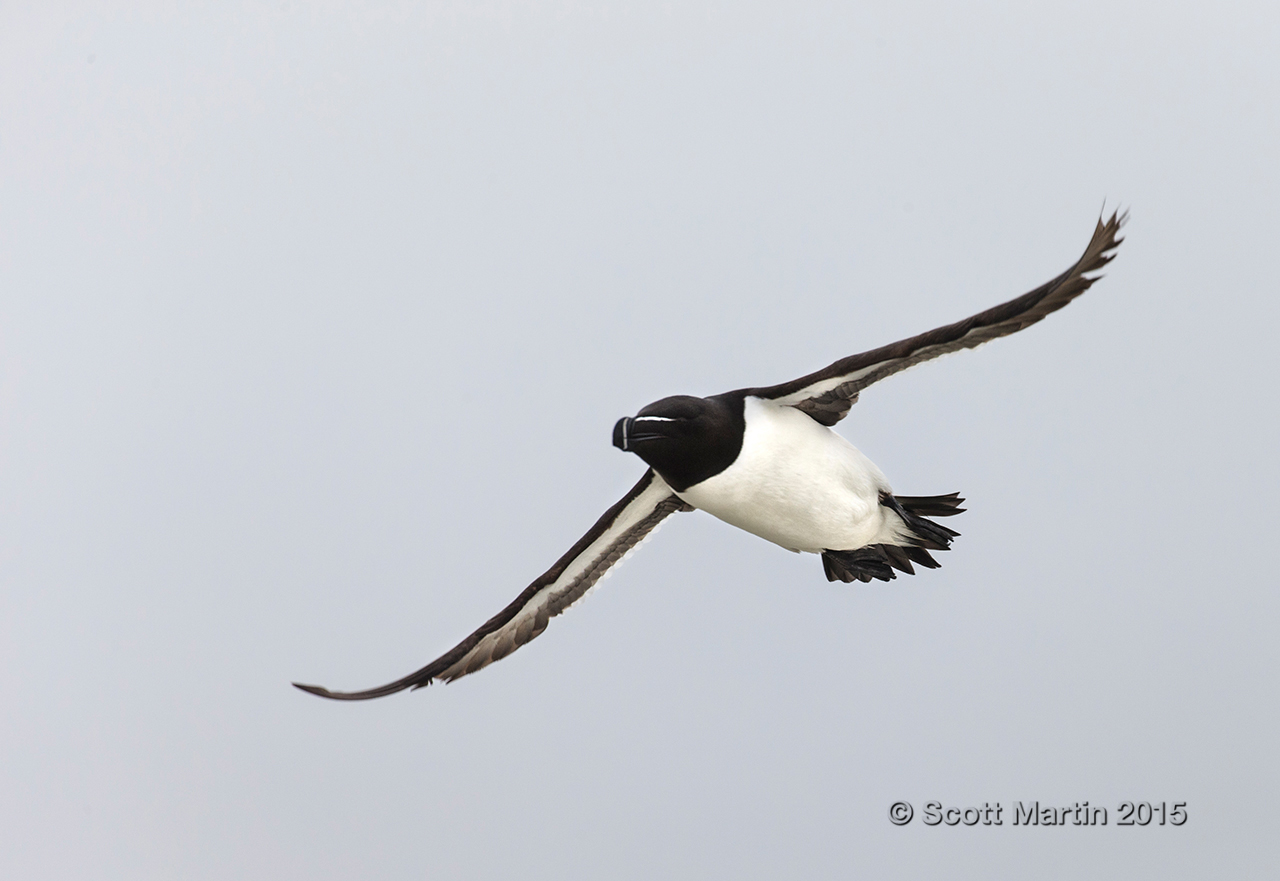
All the images in this post were taken with either a Canon 1Dx with 100-400 L IS II lens or a Canon 5D Mk III with 500 f4 L IS lens, hand held from a blind.
I trust you have enjoyed this brief post highlighting the Common Murre and Razorbill, that colonize Machias Seal Island in June and July each year along with the Atlantic Puffin. If you have never seen these birds I would highly recommend you plan your next vacation through the fabulous Canadian Maritime provinces and set aside a few days within your vacation for an excursion to Grand Manan and Machias Seal Islands. You won’t be disappointed.

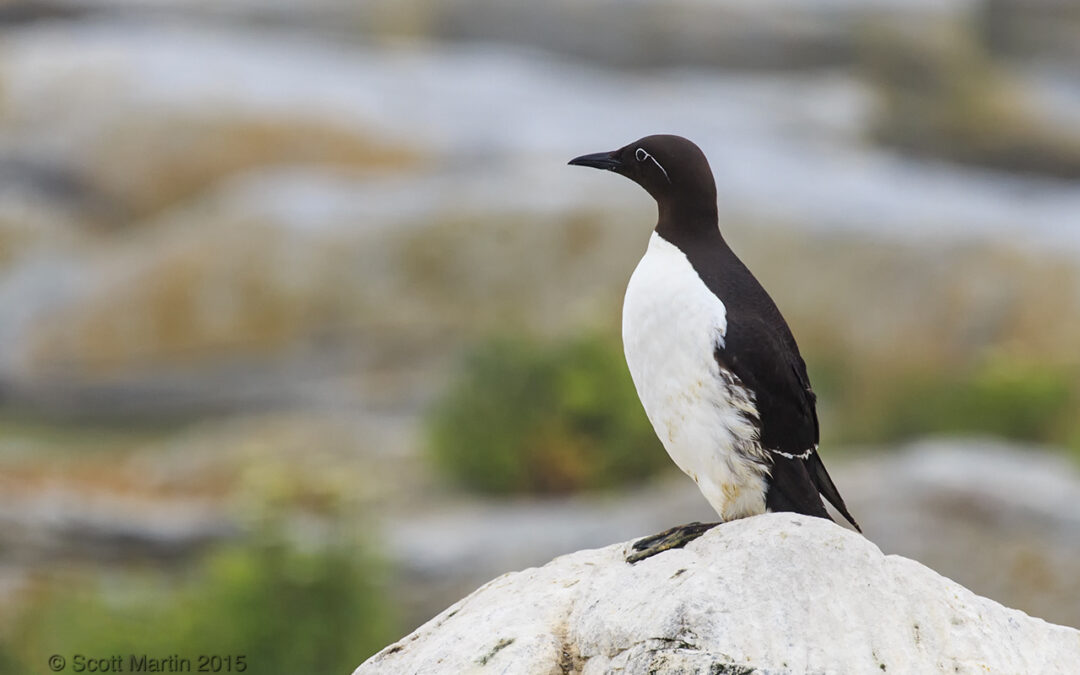
You have successfully captured the often overlooked other inhabitants Machias. Those in-flight shots are remarkable as I remember how small the portholes are so the 100-400 was the perfect lens to have in your arsenal.
Thanks Arni and you are exactly correct re the 100-400 being the right lens with those small portholes.
Thanks Arni and it certainly was an unexpected treat to see the Arctic Terns, especially flying so close to us while we were waiting to go to the blinds.
Awesome shots, On our list to do, I gather tripods don’t work, would a monopod be helpful to take on trip?
Hi Steven and thanks for taking time to comment. It is much appreciated. I brought a monopod but didn’t use it as it just wasn’t practical shooting through the very small portal in the blind (and we were instructed not to allow lenses to protrude outside the blind). I just rested the lens hood of the 500 on the edge of the portal and used the blind wall as support. Flight shots were strictly hand held using the smaller 100-400, so weight wasn’t a concern but tracking birds through the small opening in the blind was next to impossible! There is a video of the blinds in the Puffin blog post where you can see just how small the portals were, here is a link to the Puffin blog http://goo.gl/d9Zsrk
Thank you Scott. Very interesting. Regards Richard
Thanks Richard and if you get a chance, have a look at the Puffin blog to see what Deb had to put up with to get to the island 🙂